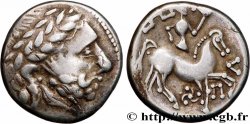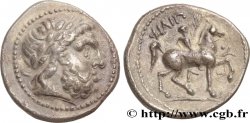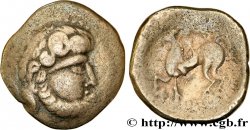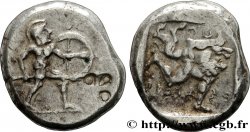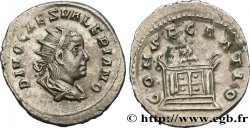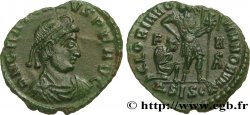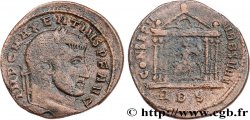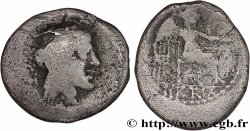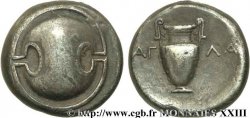v43_1195 - CELTICOS DEL DANUBIO Tétradrachme au cavalier sans bras
MONNAIES 43 (2010)
Precio de inicio : 380.00 €
Valoración : 600.00 €
Precio realizado : 473.00 €
Número de ofertas : 4
Oferta más alta : 473.00 €
Precio de inicio : 380.00 €
Valoración : 600.00 €
Precio realizado : 473.00 €
Número de ofertas : 4
Oferta más alta : 473.00 €
Tipo : Tétradrachme au cavalier sans bras
Fecha: (IIe-Ier siècles avant J.-C.)
Metal: plata
Diámetro: 22 mm
Eje de acuñación: 8 h.
Peso: 13,32 g.
Grado de rareza: R2
Comentarios sobre el estado de conservación:
Très bel exemplaire, frappé sur un flan un peu court et épais. Frappe centrée et vigoureuse, avec un beau brillant de frappe des deux côtés et une fine patine irisée
N° en los catálogos de referencia :
Pedigrí:
Cet exemplaire a été acheté 525$ chez Freeman & Sear
Anverso
Titulatura del anverso: ANÉPIGRAPHE.
Descripción del anverso: Tête laurée de Zeus à droite ; grènetis.
Reverso
Titulatura del reverso: ANÉPIGRAPHE.
Descripción del reverso: Cavalier au pas à droite ; le cheval lève l'antérieur gauche ; aucun ornement entre les jambes du cheval.
Comentario
Si le statère d’or de Philippe II de Macédoine a servi de prototype à de nombreuses imitations gauloises, le tétradrachme n’a pas été imité en Gaule, mais reste principal sujet d’inspiration des monnaies pour les Celtes du Danube (LT. 9697-9767, 9768-9832, 9618-9630, 9870-9886). Les premières imitations furent frappées dans le premier quart du IIIe siècle avant J.-C. La fabrication des copies serviles, puis des imitations, enfin des frappes celtiques continuèrent pendant plus de deux siècles.
While the gold stater of Philip II of Macedon served as a prototype for many Gallic imitations, the tetradrachm was not imitated in Gaul, but remained the main source of inspiration for coins for the Danube Celts (LT. 9697-9767, 9768-9832, 9618-9630, 9870-9886). The first imitations were struck in the first quarter of the 3rd century BC. The manufacture of servile copies, then imitations, and finally Celtic strikes continued for more than two centuries.
While the gold stater of Philip II of Macedon served as a prototype for many Gallic imitations, the tetradrachm was not imitated in Gaul, but remained the main source of inspiration for coins for the Danube Celts (LT. 9697-9767, 9768-9832, 9618-9630, 9870-9886). The first imitations were struck in the first quarter of the 3rd century BC. The manufacture of servile copies, then imitations, and finally Celtic strikes continued for more than two centuries.








 Informar de un error
Informar de un error Imprimir la página
Imprimir la página Comparte mi selección
Comparte mi selección Haz una pregunta
Haz una pregunta Consignar / vender
Consignar / vender
 Descriptivo
Descriptivo